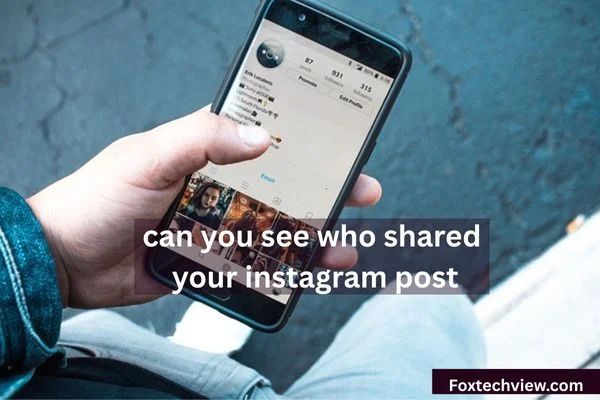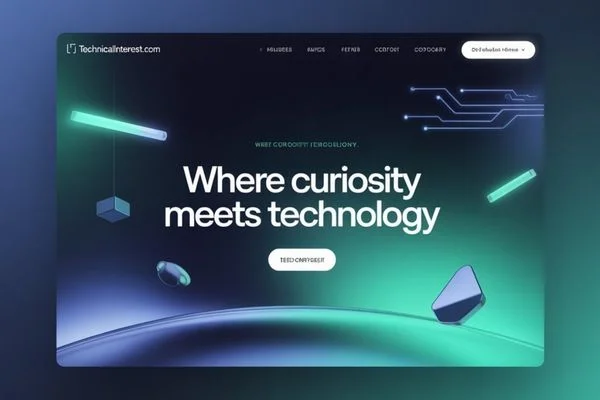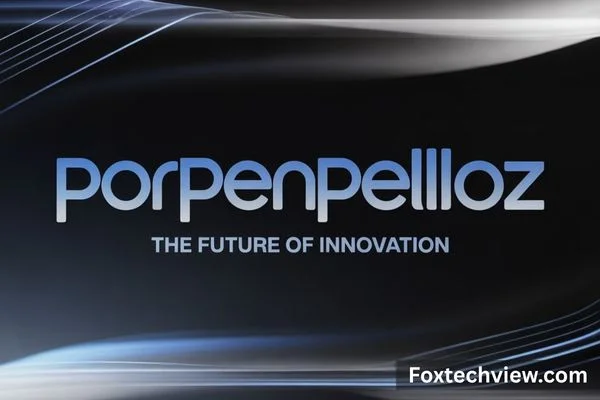
Source: Pixabay.com
Introduction:
In today’s hyper-connected digital landscape, social media influencers have evolved from everyday people sharing their lives online to powerful cultural forces capable of swaying public opinion, launching global trends, and generating millions in revenue. With this unprecedented power comes a darker side: the increasingly desperate pursuit of attention that leads many influencers to push boundaries beyond acceptable limits. This phenomenon—aptly described as “influencers gone wild”—offers a fascinating glimpse into the psychology, economics, and ethics of fame in the digital age.
The Evolution of Influence: From Relatable to Outrageous
The influencer economy didn’t begin with controversy. Early social media personalities gained followings by offering authentic glimpses into their lives, sharing useful knowledge, or demonstrating unique talents. However, as platforms became saturated and algorithm changes made visibility more challenging, the bar for capturing attention rose dramatically.
This evolution can be traced through distinct phases:
| Era | Years | Characteristics | Content Style |
|---|---|---|---|
| Early Adoption | 2007-2012 | Organic growth, authentic sharing | Simple vlogs, daily life content |
| Professionalization | 2013-2016 | Structured content, brand deals emerge | Polished tutorials, lifestyle content |
| Saturation | 2017-2019 | Increased competition, algorithm challenges | Clickbait titles, theatrical thumbnails |
| Attention Crisis | 2020-Present | Extreme measures for visibility | Shocking stunts, manufactured drama |
“The shift happened so gradually that many creators didn’t recognize how far they’d strayed from their original content,” notes digital anthropologist Dr. Leslie Wong. “What began as minor exaggerations to make content more interesting evolved into elaborate productions designed specifically to provoke strong reactions.”
The Attention Economy: Understanding the Driving Forces
To comprehend why influencers increasingly resort to wild behavior, we must examine the economic model underpinning social media fame. Unlike traditional entertainment industries with established gatekeepers, social media success operates on a direct attention-to-revenue model: more eyes equal more dollars.
The Economics of Outrage
Research shows that content triggering strong emotional responses—particularly shock, outrage, or disbelief—generates significantly higher engagement metrics than neutral content. This creates a powerful incentive structure pushing creators toward increasingly extreme behavior.
Consider these engagement statistics from a 2023 social media analysis:
| Content Type | Average View Duration | Share Rate | Comment Rate |
|---|---|---|---|
| Educational | 2:17 | 1.2% | 0.8% |
| Lifestyle/Aspirational | 3:05 | 2.4% | 1.9% |
| Comedy/Entertainment | 3:42 | 4.5% | 3.2% |
| Controversial/Shocking | 5:21 | 8.7% | 11.6% |
“These numbers tell a clear story,” explains digital marketing expert Jordan Rivera. “When your livelihood depends on engagement, and controversial content generates 3-5 times more interaction, the temptation to cross lines becomes nearly irresistible for creators feeling pressure to maintain relevance.”
Categories of Influencer Controversy: A Taxonomy of Trouble
The phenomenon of “influencers gone wild” manifests in various forms, each with its patterns and consequences. Understanding these categories helps illustrate the breadth of the issue:
1. The Public Prankster
These influencers build content around increasingly disruptive public stunts, often inconveniencing or embarrassing unsuspecting bystanders for entertainment value.
Real-world impact: Beyond the immediate discomfort of victims, these pranks normalize boundary violations and can inspire dangerous copycat behavior among younger followers.
“What viewers don’t see is how many takes these pranks often require,” reveals former production assistant Tyler Kim. “Sometimes dozens of people experience the negative effects of these ‘spontaneous’ moments before the creator gets the reaction they’re looking for.”
2. The Controversy Cultivator
These personalities deliberately take provocative stances on sensitive topics, often making inflammatory statements they may not even believe to generate outrage and discussion.
Real-world impact: This approach pollutes public discourse, deepens societal divisions, and can normalize extreme viewpoints when presented as “just an opinion.”
3. The Dangerous Demonstrator
Perhaps most concerning are influencers who perform risky physical stunts, dangerous challenges, or showcase illegal activities for views—from extreme parkour on skyscrapers to dangerous driving stunts on public roads.
Real-world impact: These creators have directly inspired injuries and even fatalities among impressionable followers attempting to recreate their content.
4. The Fabrication Artist
These influencers construct entirely fictional narratives about their lives, relationships, or circumstances, often involving elaborate hoaxes that manipulate audience emotions.
Real-world impact: Beyond the breach of audience trust, these fabrications can trivialize serious issues when used as plot devices and create unrealistic expectations about life events.
5. The Exploitation Expert
Some creators build content around vulnerable populations or individuals unable to fully consent, including children, homeless people, or individuals with disabilities.
Real-world impact: This content commodifies vulnerability and can reinforce harmful stereotypes while violating the dignity of those featured.
The Psychology Behind the Phenomenon
Understanding why intelligent, otherwise reasonable people risk their reputations, relationships, and sometimes freedom for digital notoriety requires examining the psychological factors at play.
The Dopamine Loop
Research in neuropsychology suggests that receiving positive feedback online—likes, comments, shares—triggers dopamine release similar to other rewarding experiences. This creates a biological reinforcement cycle that can become increasingly difficult to satisfy.
“The brain doesn’t distinguish between 10,000 strangers approving of your content and genuine connection,” explains neuropsychologist Dr. Aisha Johnson. “But it does build tolerance, requiring ever-larger ‘hits’ of validation to achieve the same emotional effect.”
Disconnect from Consequences
The digital medium creates psychological distance between actions and their impacts. When audience interactions are reduced to numbers on a screen, it becomes easier to prioritize metrics over ethical considerations.
“Many creators experience a form of moral disengagement,” notes media psychologist Dr. Marcus Tran. “They develop cognitive frameworks that allow them to separate their ‘content persona’ from their real identity, enabling behavior they would normally condemn.”
Fear of Irrelevance
Perhaps most powerful is the existential fear many influencers develop around losing their platform, especially those who’ve abandoned traditional career paths or identity markers in favor of digital fame.
“When your entire sense of self becomes intertwined with your online presence, the prospect of audience decline isn’t just a professional concern—it’s an identity crisis,” explains cultural sociologist Dr. Rebecca Flores. “This creates a perfect storm where rational risk assessment gets overwhelmed by the desperate need to remain visible.”
Real Consequences: When Digital Actions Meet Analog Laws
While the pursuit of viral fame may seem like a game confined to the digital realm, the consequences often spill dramatically into the real world:
Legal Repercussions
Recent years have seen numerous high-profile criminal cases against influencers:
- Multiple creators were charged with trespassing, vandalism, and destruction of property for content stunts
- Influencers are facing fraud charges for fake giveaways or investment schemes
- Creators receiving criminal charges for dangerous driving, public endangerment, and other reckless behaviors
- Multiple influencers investigated for tax evasion on undisclosed sponsorship income
Career Implosion
The very viral nature that builds an influencer’s career can destroy it overnight:
| Consequence | Timeframe | Recovery Rate |
|---|---|---|
| Sponsor Exodus | Immediate (24-48 hours) | Only 31% regain major sponsorships |
| Platform Demonetization | 1-7 days | 43% eventually restore monetization |
| Audience Loss | 2-4 weeks (peak decline) | Average loss of 38% of pre-controversy audience |
| Industry Blacklisting | 6+ months | Less than 20% return to the previous industry status |
“The speed of cancellation often catches creators off-guard,” notes crisis management consultant Darius Williams. “They don’t realize that crossing certain lines creates a liability no brand wants to be associated with, regardless of audience size.”
Mental Health Consequences
Perhaps the least visible but most significant impacts occur in creators’ psychological well-being:
“The psychological toll of sudden, intense public scrutiny can be devastating,” explains Dr. Maya Harris, who specializes in treating public figures facing backlash. “Many experience clinical depression, anxiety disorders, and even PTSD symptoms following major controversies, especially when coupled with the loss of their primary identity and income source.”
Platform Politics: The Conflicted Role of Social Media Companies
Social media platforms find themselves in a complex position regarding extreme content. While officially discouraging harmful material through community guidelines, their business models fundamentally benefit from high-engagement content, regardless of why it engages users.
The Moderation Dilemma
Platforms must balance several competing interests:
- Preventing truly dangerous or illegal content
- Avoiding excessive censorship accusations
- Maintaining advertiser-friendly environments
- Preserving the viral mechanics that drive platform growth
“It’s a fundamental conflict of interest,” argues digital ethics researcher Dr. Andrew Park. “The same algorithms that maximize engagement and therefore platform revenue also systematically promote increasingly extreme content. Meaningful reform would require restructuring the entire business model.”
Enforcement Inconsistencies
Perhaps most frustrating for creators is the seemingly arbitrary nature of enforcement:
“The same behavior that gets one creator permanently banned might earn another a brief warning, depending on audience size, media attention, or seemingly random factors,” notes online culture journalist Sophia Chen. “This inconsistency creates an environment where boundaries feel unclear and constantly shifting.”
The Rehabilitation Narrative: Controversy as Career Strategy
One of the most intriguing aspects of the “influencers gone wild” phenomenon is how frequently it incorporates its resolution through carefully managed comeback stories.
The Apology Industrial Complex
A predictable pattern has emerged around influencer controversies:
- Attention-grabbing controversial action
- Viral spread and public outrage
- Brief disappearance from platforms
- Carefully crafted apology video (often monetized)
- “Reflection period” content documenting personal growth
- Gradual rehabilitation and career renaissance
“What many viewers don’t recognize is how these redemption arcs themselves become content strategies,” explains digital media professor Dr. James Liu. “The controversy and subsequent redemption can ultimately generate more engagement than the creator’s regular content ever did.”
Case Study: The Strategic Spiral
Consider the case of lifestyle influencer Megan Reynolds, who faced backlash after faking a pregnancy for content. Her subsequent journey followed a remarkably calculated path:
- Initial controversy generated 12 M+ views across platforms
- Tearful apology video: 18M views (3x her typical reach)
- “My Healing Journey” series: 45% subscriber growth
- “What I Learned” speaking tour: sold-out venues in 15 cities
- Mental health advocacy rebrand: major pharmaceutical sponsorship
“It’s difficult to determine genuine remorse from strategic pivoting,” notes Reynolds’ former collaborator, speaking anonymously. “When controversy becomes more profitable than regular content, the incentive structure itself becomes corrupted.”
The Audience Paradox: Our Complicity in the Cycle
Perhaps the most uncomfortable aspect of this analysis is examining our role as content consumers. Despite expressions of disapproval, audience behavior tells a different story:
- Controversy consistently outperforms regular content in engagement metrics
- “Callout” and reaction content discussing wild behavior creates its profitable content ecosystem
- Even negative engagement (angry comments, debate) signals to algorithms that content is worth promoting
“We say we want authentic, responsible content, but our attention patterns reveal different preferences,” explains media researcher Dr. Sarah Johnson. “As long as outrageous behavior captures more eyeballs than measured content, the market will continue producing it.”
Breaking the Cycle: Paths Toward Healthier Influence
Despite these challenges, there are promising approaches to rehabilitating influencer culture:
Creator-Level Solutions
Individual influencers can adopt more sustainable practices:
- Diversifying income streams beyond pure attention metrics
- Building businesses with value propositions beyond personal brand
- Establishing personal ethical boundaries before facing temptation
- Focusing on specific niches where expertise creates sustainable value
“The most enduring influencer careers aren’t built on viral moments but on consistent value delivery to specific communities,” notes digital strategist Maria Gonzalez. “When your business model doesn’t rely exclusively on maximum views, the pressure to continuously escalate decreases.”
Platform Responsibility
Social media companies can implement structural changes:
- Revising recommendation algorithms to reduce emphasis on outrage-driving content
- Creating clearer, more consistently enforced community standards
- Developing more nuanced monetization models beyond pure engagement
- Implementing “circuit breakers” that flag potentially harmful trending content for review
“Meaningful change requires platforms to acknowledge their role in creating perverse incentives,” argues tech ethicist Dr. Taylor Robinson. “Until the economic model shifts, individual policy tweaks will have limited impact.”
Consumer Accountability
Perhaps most importantly, we as audience members can become more conscious consumers:
- Recognizing that engagement (even negative) rewards problematic content
- Supporting creators who demonstrate sustainable, ethical practices
- Building media literacy skills to recognize manipulation tactics
- Being mindful about what content we amplify through sharing
Moving Forward: The Future of Digital Influence
As we navigate this complex landscape, several trends suggest potential paths forward:
1. The Authenticity Renaissance
Paradoxically, as manufactured controversy becomes more transparent, we’re seeing renewed audience appreciation for genuine authenticity—creators who acknowledge their commercial interests while maintaining ethical boundaries.
2. Community-Centered Models
More creators are shifting toward membership and community-based business models that reward depth of connection rather than breadth of viral reach.
3. Institutional Guardrails
Industry organizations are developing professional standards and ethics codes specific to digital creation, creating frameworks for self-regulation.
4. Educational Initiatives
Schools increasingly incorporate media literacy programs, helping young people critically evaluate the content they consume and create.
Frequently Asked Questions About Influencers Gone Wild
Q1. Why do influencers risk their careers with controversial behavior?
The fundamental driver is economics. In a saturated market where attention equals income, extreme behavior generates significantly higher engagement than conventional content. This creates powerful incentives that can override rational risk assessment. Additionally, psychological factors like the dopamine hits from validation, the fear of irrelevance, and the gradual normalization of boundary-pushing contribute to increasingly risky decision-making.
Most influencers don’t start with the intention of crossing ethical lines—instead, they follow a gradual escalation path where each piece of content needs to outperform the last, creating a slippery slope toward more extreme behavior.
Q2. Do influencers face legal consequences for content stunts?
Yes, and with increasing frequency. Recent years have seen numerous high-profile legal cases against influencers, including:
- Criminal charges for trespassing, vandalism, and property destruction during video shoots
- Fraud prosecutions related to fake giveaways, investment schemes, or misrepresented partnerships
- Public endangerment charges from dangerous stunts performed in public spaces
- Child endangerment cases involving minor participants in risky content
- Tax evasion investigations for unreported income from brand deals and sponsorships
The law doesn’t distinguish between actions performed for content and those done off-camera—a fact many influencers learn too late.
Q3. How do social media platforms benefit from controversial content?
While platforms publicly discourage harmful content through their community guidelines, their business models benefit from high-engagement material regardless of why it engages users. Controversial content typically generates:
- Longer view durations (boosting ad impressions)
- Higher comment rates (increasing time on platform)
- More shares (expanding reach and user acquisition)
- Greater return visits (as users check for updates and responses)
This creates an inherent conflict of interest where platforms’ public values can clash with their algorithmic optimization goals, which typically reward provocative content with greater distribution.
Q4. Is “going wild” a deliberate career strategy?
For some influencers, absolutely. Industry insiders acknowledge the existence of what’s sometimes called “the controversy pipeline”—a deliberate career arc incorporating:
- Building an initial audience through conventional means
- Introducing increasingly provocative content when growth plateaus
- Manufacturing a significant controversy when larger attention is desired
- Executing a carefully orchestrated redemption arc
- Rebranding with a “lessons learned” narrative that often attracts more attention than their pre-controversy content
This strategy exploits the reality that notoriety often generates more sustained interest than conventional fame in the digital landscape.
Q5. How can parents protect children from being influenced by extreme content?
Parents can take several proactive approaches:
- Engage in co-viewing practices to discuss concerning content in real-time
- Utilize platform-provided parental controls and content filters
- Focus on developing critical media literacy skills over strict prohibition
- Create open dialogue about the realities of influencer content production
- Encourage following creators who demonstrate positive values and transparent practices
- Discuss the potential staging and manipulation behind seemingly spontaneous content
- Help children understand the economic incentives driving extreme behavior
Research suggests that building critical thinking skills proves more effective long-term than attempting to restrict access to problematic content completely.
Q6. Can influencers recover from significant controversies?
Data suggests that while complete recovery is challenging, strategic rehabilitation is possible. Recovery rates vary significantly based on:
- The nature and severity of the transgression
- How the influencer handles the immediate aftermath
- The demographic and values of their core audience
- Whether the controversy violated core audience expectations
- The influencer’s willingness to demonstrate genuine accountability
Generally, controversies involving fabrication or deception prove more damaging to long-term prospects than those involving poor judgment, as they fundamentally breach the trust relationship with audiences.
Q7. Is there any meaningful regulation of influencer behavior?
Formal regulation remains limited, but several emerging frameworks are beginning to provide guardrails:
- FTC and similar international agencies have strengthened disclosure requirements for sponsored content
- Industry organizations like the Internet Creators Guild are developing professional standards
- Platform policies continue to evolve, though enforcement remains inconsistent
- Advertiser pressure creates de facto regulation as brands increasingly vet creator partners
- Legal precedents are being established as more influencer cases reach courts
- Educational initiatives aim to create more informed audiences who can self-regulate their consumption
Most experts believe effective oversight will require collaboration between platforms, regulators, creators, and audiences rather than any single solution.
Conclusion: Reclaiming Healthy Influence
The phenomenon of “influencers gone wild” represents more than just isolated incidents of poor judgment—it reveals fundamental tensions in our digital media ecosystem. By understanding the economic, psychological, and social forces driving extreme behavior, we can begin the complex work of creating healthier models of influence.
The responsibility lies with multiple stakeholders: platforms must reconsider their algorithmic priorities, creators must establish sustainable business models less dependent on attention escalation, and audiences must become more conscious about where they direct their valuable attention.
As social media continues its evolution, the question remains: can we harness the democratizing power of digital platforms while mitigating their tendency to reward our most provocative impulses? The answer will shape not just the future of influencer culture but the broader contours of our digital public sphere.
“What’s at stake isn’t just the fate of individual careers, but our collective ability to maintain healthy discourse in digital spaces,” concludes digital sociologist Dr. Elena Kim. “The influencer economy is ultimately a mirror reflecting our own values as a society—and we would do well to consider what image we wish to see reflected.”






